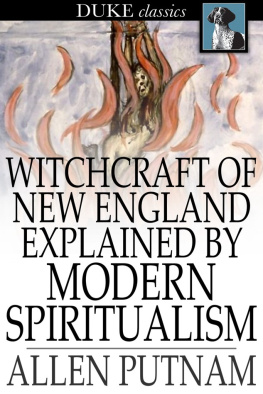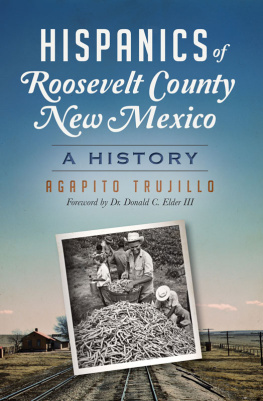INTRODUCTION
Table of Contents
WHAT IS A COUNTY?
Table of Contents
Among the many curious fables which pass current for history, one of the most curious is that which attributes to Alfred the Great the division of England into counties. The truth is, however, that all the stories which make up the ordinary idea of his life are, without exception, either false or destitute of authority. Alfred did not win a prize for reading at twelve years old; he did not burn the cakes in the neatherds cottage; he did not found the University of Oxford; and he did not divide England into counties. The bare notion of such a division, indeed, is in itself ridiculous. If any one were to say that St. Louis partitioned France into provinces, we should at once see the absurdity of the statement; but when the corresponding absurdity is asserted about England, most Englishmen fail to recognise its impossibility. We know that the kingdom of France grew by the gradual absorption of Normandy and Brittany, of Guienne and Burgundy, of Provence and the Dauphine, because the absorption took place late in the Middle Ages; but we forget that the kingdom of England grew through the amalgamation of Kent and Sussex, Cornwall and Devon, Northumbria and Lindsey, because the amalgamation took place almost before the period when most of us begin to feel a living interest in history at all. But to speak of the counties being made is hardly less absurd than it would be to say that Queen Anne separated Great Britain into England, Wales, Scotland, and Ireland. The real fact is that the counties were united, not that they were divided: they represent old independent communities, now merged into a larger whole, not parts artificially cut off from such a whole. They are like the Swiss cantons rather than like the French departments. Certainly, if any one had ever undertaken to map out England into administrative subdivisions, it could not have been Alfred; for Alfred was never King of more than Wessex and its dependencies south of Thames, with a small fragment of south-western Mercia. All England north of London and Oxford then belonged to the Dane; the whole west coast still belonged to the Welshman; and even Devon and Cornwall still remained independent under their own British chiefs. The counties are in part far earlier, and in a few cases a good deal later, than Alfreds time.
The truth is that our shires have grown; and it is this natural growth which renders their history so interesting. Their boundaries generally represent the old boundaries of tribes or kingdoms; and even their irregularities often point back to historical or prehistoric conqueststo isolated colonies of one folk in the territory of another, or to intrusive wedges of invading people cutting off one little corner of a hostile tribe from the remainder of its lands. Some of them preserve for us the frontiers of early English kingdoms; some of them keep up the memory of Danish hosts, who settled down in some little principality as independent commonwealths; some of them even retain the names and limits of ancient British tribes; a few date far later, and recall only some administrative regulation of the Conqueror or his Angevin successors. In the south, many of the shires are coincident with the first Teutonic kingdoms, which were originally far more numerous than seven. Kent keeps the boundaries of two early Jutish principalities; Sussex is the land of the South Saxons, Middlesex of the Middle Saxons, Essex of the East Saxons. Norfolk and Suffolk are the North and South Folks of the East English. Surrey, or Suthrige, is the South Kingdom beyond the Thames: often, but no doubt erroneously, supposed to have been a dependency of Sussex; for in that case we might surely expect it to be called Northrige or Norrey, in reference to the parent Statejust as the north-western county of Scotland is called Sutherland, because it lay south from the earldom of Orkney, to which it belonged. Wessex, on the other hand, is portioned out into several shires, which mark the successive conquests of the West Saxon settlers. Hampshire, or the county of Southampton (containing the original capital of Winchester, long the royal city of England), coincides with the first principality of the Gewissas, the nucleus of the whole West Saxon State. Dorsetshire is the land of the Dorste, the settlers among the Durotriges, whose semi-Celtic descendants still occupy the whole county. Somerset and Devonshire are the territories of the Sumorste and Defnste, Saxon freebooters, who similarly won themselves dominion over the conquered and enslaved Damnonii. Each of these West Saxon counties long preserved its own ealdorman; and their complete union under a single overlord at Winchester was probably a comparatively late event. Even after Alfreds time they kept up many traces of their original local independence.
In the midlands and the north, again, the counties are mostly of Danish or later origin. There the shires group themselves as a rule pretty evenly round their county towns, from which they take their names; while the town stands about the centre of the roughly circular county. Instead of a square Sussex with Chichester in one corner, instead of an irregular Devonshire with Exeter on its outer verge, instead of an angular Berkshire with Reading in a bend of its boundary, we get counties like Warwickshire, Derbyshire, and Nottinghamshire, lying around towns of the same namesWarwick, Derby, Nottingham. These shires represent the burgs of the Danes, small hosts of whom settled in the chief towns, and took the surrounding country for their domain. Forming loose confederacies, as the Five Burgs and Seven Burgs, they long held out against the West Saxon conquerors; and when at last they submitted to Edward or Edgar, they retained their own lawmen and kept their own boundaries. Yorkshire is the kingdom of the great Danish host in York; while Northumberland, now so curiously misnamed, represents the last fragment of the old Christian Northumbrian realm which held out successfully under the Lords of Bamborough against the heathen intruders. Once, indeed, it also included the Lothians; but when that tract was ceded by Dunstan to Kenneth, King of the Gaelic Scots, the name of Northumberland, formerly given to the whole country between Humber and Forth, was restricted to the little central belt between Tyne and Tweed. Durham is even a later creation, the county palatine of the prince-bishop upon whom William bestowed the patrimony of St. Cuthbert. As to the western counties, from Cumberland to Cornwall, they have grown up from sundry conquests over the Welsh, and they mark on the whole the gradual extension of the direct English dominion over the formerly semi-independent chieftains of Cymric Britain.
It is curious, too, how irregularly the growth and recognition of the shires has taken place. Wight was long a separate Jutish kingdom, conquered at last by the West Saxons. Another Jutish kingdom, that of the Meon-waras, now forms part of Hampshire. Kent is in modern times a single county; but it once consisted of two independent principalitiesthose of the East and West Kentingswhich still form two dioceses, with their cathedrals at Canterbury and Rochester respectively. The North and South Folk of the East English have obtained rank as separate shires; while the people of Lindsey, Holland, and Kesteven, together with the Gainas (who had their own ealdorman and their capital at Gainsborough) have all been rolled into the one modern county of Lincoln, probably because all were united under a single Danish host. Nobody knows when or how little Rutland became a county; while Yorkshire, for all its size and its Ridings, and for all its older principalities, too, of Elmet, Craven, Cleveland, Holderness, and Hallamshire, remains a single shire to the present day. Westmorland still formed part of the same great county at the date of Domesday, and only gained its existing rank at a later period. As a rule, however, every shire represents an old independent commonwealth; and from the coalescence of these commonwealths we get first the kingdoms of Wessex, Mercia, and Northumbria, and afterwards the kingdom of England. Sometimes, indeed, the existing county itself results from the still earlier coalescence of still smaller and more shadowy principalities. Thus the evolution of each countythe steps by which it became a county and the causes which produced itthrows an immense amount of light upon our very earliest and most unwritten history. And as everybody has an interest in at least one county, such an inquiry is also full of personal elements, as helping us better to understand the origin and nature of the smaller communities whereof each of us is a product and an outcome. The history of our county is the ethnographical and genealogical formula for ourselves. It is a valuable fragment of our prehistoric and irrecoverable pedigree.
















